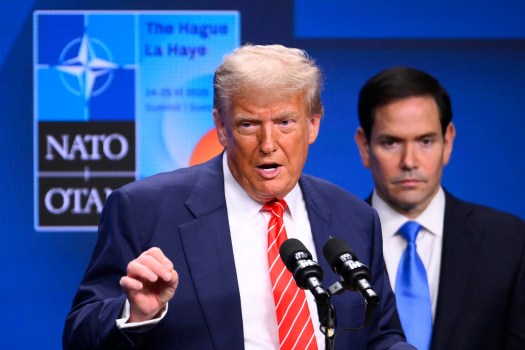NATO countries made their most ambitious commitment in decades when they agreed to spend 1.5% of GDP on defense infrastructure and 3.5% on military capability. It acknowledges a fundamental fact: at a time when U.S. support is becoming less secure, Russia’s war in Ukraine has revealed serious weaknesses in Europe’s defenses. Converting that lofty goal into deployable weaponry quickly enough to counter the threat is now the challenge.
Finding the funds to fulfill the new obligations is the first step. The UK, France, and Italy already have significant budget deficits. Pedro Sanchez, the prime minister of Spain, asserts that his nation has managed to reach an agreement to spend only 2.1% of its GDP. Even though its debt brake has been loosened, Germany’s poor growth and contentious politics may eventually weaken its resolve. It will take discipline and probably ongoing U.S. pressure to make sure members don’t back out of their spending commitments.
The prudent use of the funds will be much more crucial. Addressing Europe’s dispersed military industry and redundant weaponry must be the primary priority. In addition to producing over a dozen primary battle tank variations, the area is pursuing two competing sixth-generation fighter programs: the Global Combat Air Program (Britain, Italy, Japan) and the Future Combat Air System (France, Germany, Spain).
There has been some progress, such as the Nordic governments pooling their ammunition orders through Norway’s Nammo AS. Additionally, 19 EU nations are using the European Defense Agency, an EU agency, to finance cooperative drone and electronic warfare initiatives.
Instead than demanding extensive purchase European goods, European nations should recognize when local manufacturing makes sense and when it doesn’t. From cyber and electronic warfare to air and missile defenses, as well as information, surveillance, and reconnaissance, Europe continues to rely on the United States for a number of vital needs.
When feasible, countries should license production locally and keep purchasing vital capabilities from the United States.
Not only will expenditure levels need to be closely watched, but so will the delivery of weapons. An annual public scorecard that is accessible to taxpayers should be created from NATO’s classified capability reviews. In addition, governments ought to be compelled to demonstrate that the money allotted for infrastructure would, in fact, be used to construct logistics centers, enlarge tunnels, and reinforce rail beds—all of which are necessary to address military mobility issues—rather than politically motivated projects masquerading as defense.
Lastly, European leaders need to be truthful with voters and, above all, with themselves. Military spending rarely creates the jobs that expenditures in green energy or health care can, even while defense R&D can lead to beneficial discoveries that help the economy as a whole. Spending a lot on military is and should be justified as a safeguard against Russian aggression rather than as a band-aid solution to slow growth.
It is commendable that NATO leaders were able to overcome political opposition and local concerns in order to reach an agreement on the new budget targets. But they must understand that their battle is far from over.
Opinion/Tribune News Service by Bloomberg












